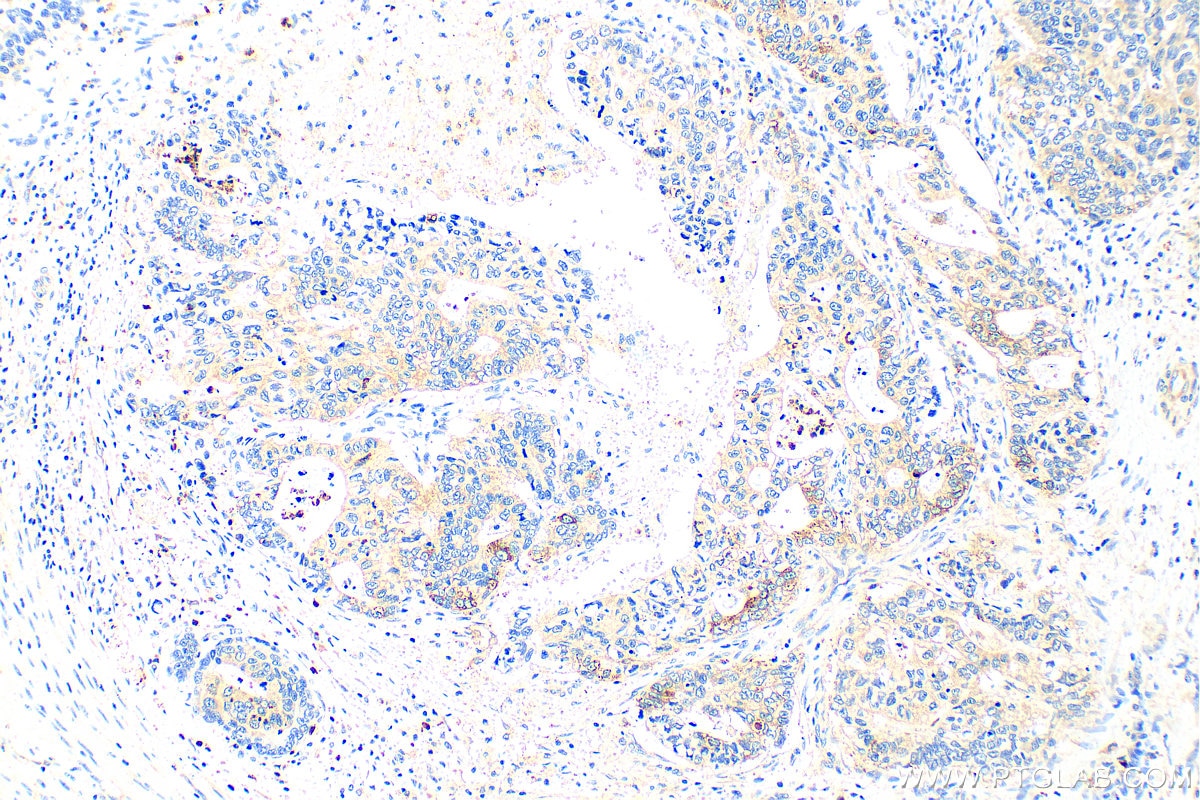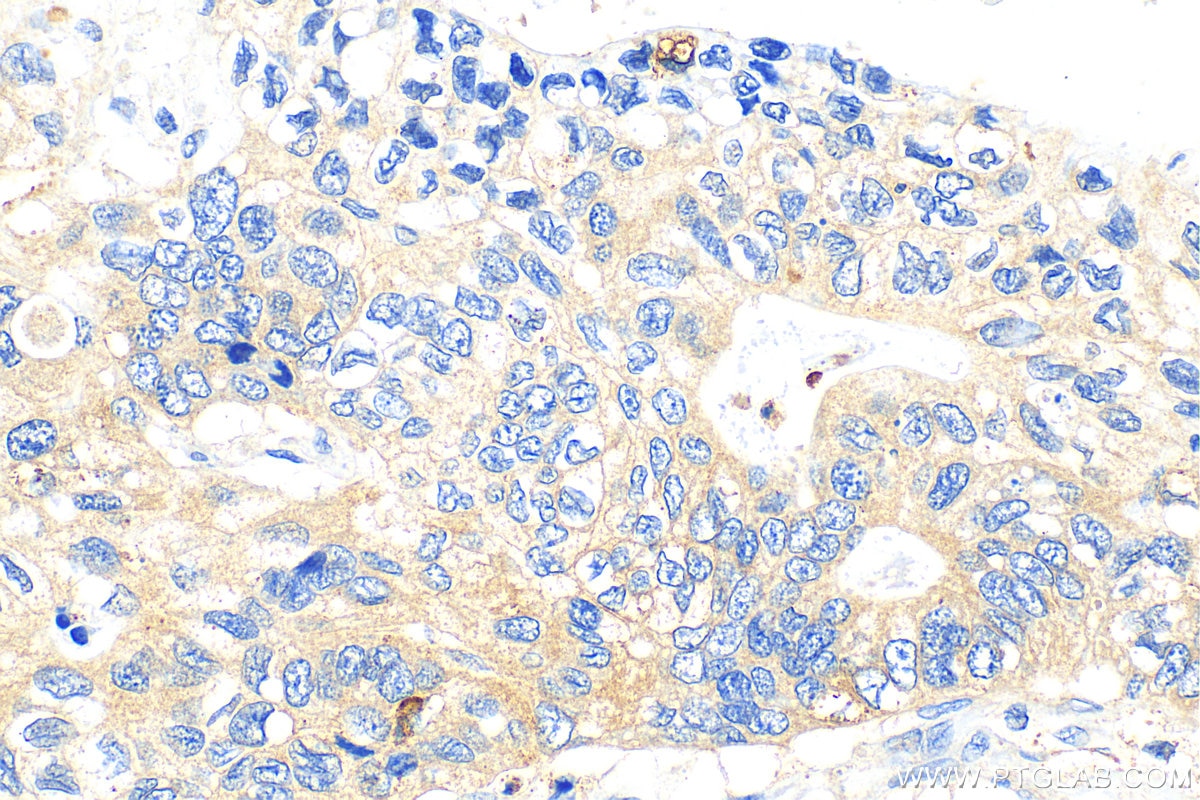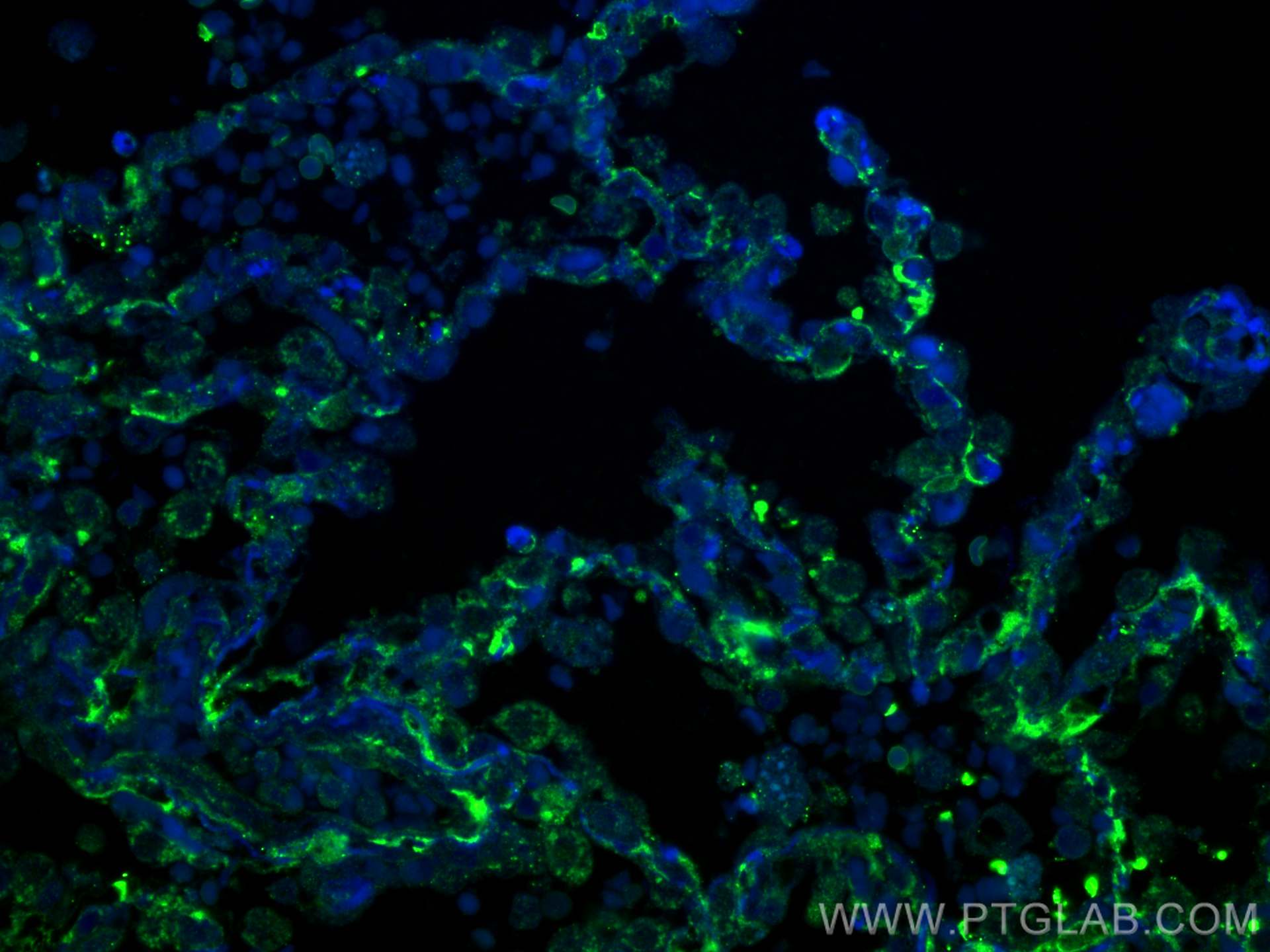- Phare
- Validé par KD/KO
Anticorps Polyclonal de lapin anti-TMEM16A/DOG1
TMEM16A/DOG1 Polyclonal Antibody for IF, IHC, ELISA
Hôte / Isotype
Lapin / IgG
Réactivité testée
Humain, souris et plus (1)
Applications
WB, IHC, IF-P, ELISA
Conjugaison
Non conjugué
N° de cat : 12652-1-AP
Synonymes
Galerie de données de validation
Applications testées
| Résultats positifs en IHC | tissu de cancer de l'estomac humain, il est suggéré de démasquer l'antigène avec un tampon de TE buffer pH 9.0; (*) À défaut, 'le démasquage de l'antigène peut être 'effectué avec un tampon citrate pH 6,0. |
| Résultats positifs en IF-P | tissu de cancer du poumon humain, |
Dilution recommandée
| Application | Dilution |
|---|---|
| Immunohistochimie (IHC) | IHC : 1:250-1:1000 |
| Immunofluorescence (IF)-P | IF-P : 1:50-1:500 |
| It is recommended that this reagent should be titrated in each testing system to obtain optimal results. | |
| Sample-dependent, check data in validation data gallery | |
Applications publiées
| KD/KO | See 1 publications below |
| WB | See 2 publications below |
| IHC | See 5 publications below |
| IF | See 3 publications below |
Informations sur le produit
12652-1-AP cible TMEM16A/DOG1 dans les applications de WB, IHC, IF-P, ELISA et montre une réactivité avec des échantillons Humain, souris
| Réactivité | Humain, souris |
| Réactivité citée | rat, Humain, souris |
| Hôte / Isotype | Lapin / IgG |
| Clonalité | Polyclonal |
| Type | Anticorps |
| Immunogène | TMEM16A/DOG1 Protéine recombinante Ag3320 |
| Nom complet | anoctamin 1, calcium activated chloride channel |
| Masse moléculaire calculée | 986 aa, 114 kDa |
| Poids moléculaire observé | 114 kDa |
| Numéro d’acquisition GenBank | BC027590 |
| Symbole du gène | TMEM16A |
| Identification du gène (NCBI) | 55107 |
| Conjugaison | Non conjugué |
| Forme | Liquide |
| Méthode de purification | Purification par affinité contre l'antigène |
| Tampon de stockage | PBS avec azoture de sodium à 0,02 % et glycérol à 50 % pH 7,3 |
| Conditions de stockage | Stocker à -20°C. Stable pendant un an après l'expédition. L'aliquotage n'est pas nécessaire pour le stockage à -20oC Les 20ul contiennent 0,1% de BSA. |
Informations générales
ANO1 also named as DOG1, ORAOV2, TAOS2 and TMEM16A, acts as a calcium-activated chloride channel. It is required for normal tracheal development. ANO1 (or DOG1) is used as an aid in the identification and diagnosis of gastrointestinal stromal tumors (GIST) within the context of an antibody panel, the patient's clinical history, and other diagnostic tests evaluated by a qualified pathologist. The immunogen is the C-terminal of ANO1. This antibody can recognize isoform1 and isoform2 of human ANO1.
Protocole
| Product Specific Protocols | |
|---|---|
| IHC protocol for TMEM16A/DOG1 antibody 12652-1-AP | Download protocol |
| IF protocol for TMEM16A/DOG1 antibody 12652-1-AP | Download protocol |
| Standard Protocols | |
|---|---|
| Click here to view our Standard Protocols |
Publications
| Species | Application | Title |
|---|---|---|
Elife Gq activity- and β-arrestin-1 scaffolding-mediated ADGRG2/CFTR coupling are required for male fertility. | ||
Biomed Pharmacother Calcium-activated chloride channel is involved in the onset of diarrhea triggered by EGFR tyrosine kinase inhibitor treatment in rats. | ||
Am J Physiol Gastrointest Liver Physiol miR-128 participates in the pathogenesis of chronic constipation by regulating the p38α/M-CSF inflammatory signaling pathway. | ||
Cell Death Dis Dual role of Ca2+-activated Cl- channel transmembrane member 16A in lipopolysaccharide-induced intestinal epithelial barrier dysfunction in vitro. | ||
Front Oncol Primary extra-gastrointestinal stromal tumor of retroperitoneum: Clinicopathologic characteristics and prognosis of six cases |
Avis
The reviews below have been submitted by verified Proteintech customers who received an incentive forproviding their feedback.
FH Shihab (Verified Customer) (09-17-2021) | I have used this for immunofluorescent stainings in a certain tissue type (cannot disclose) and despite ANO1 antibodies being notorious for such stainings (we have found only 1 other to work properly), this antibody gave very encouraging results on the first attempt at staining. With further optimisation, we should be able to get a decent staining pattern. Very impressed. I will also be trying this in various other applications. Very promising antibody.
|




